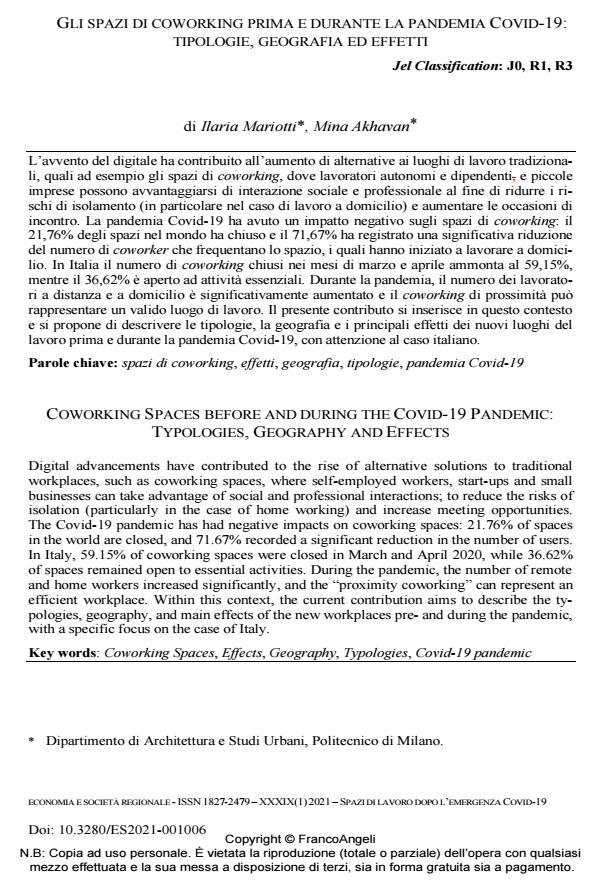Coworking spaces before and during the covid-19 pandemic: typologies, geography and effects
Journal title ECONOMIA E SOCIETÀ REGIONALE
Author/s Ilaria Mariotti, Mina Akhavan
Publishing Year 2021 Issue 2021/1
Language Italian Pages 19 P. 66-84 File size 362 KB
DOI 10.3280/ES2021-001006
DOI is like a bar code for intellectual property: to have more infomation
click here
Below, you can see the article first page
If you want to buy this article in PDF format, you can do it, following the instructions to buy download credits

FrancoAngeli is member of Publishers International Linking Association, Inc (PILA), a not-for-profit association which run the CrossRef service enabling links to and from online scholarly content.
Digital advancements have contributed to the rise of alternative solutions to traditional workplaces, such as coworking spaces, where self-employed workers, start-ups and small businesses can take advantage of social and professional interactions; to reduce the risks of isolation (particularly in the case of home working) and increase meeting opportunities. The Covid-19 pandemic has had negative impacts on coworking spaces: 21.76% of spaces in the world are closed, and 71.67% recorded a significant reduction in the number of users. In Italy, 59.15% of coworking spaces were closed in March and April 2020, while 36.62% of spaces remained open to essential activities. During the pandemic, the number of remote and home workers increased significantly, and the "proximity coworking" can represent an efficient workplace. Within this context, the current contribution aims to describe the typologies, geography, and main effects of the new workplaces pre- and during the pandemic, with a specific focus on the case of Italy.
Keywords: Coworking Spaces, Effects, Geography, Typologies, Covid-19 pandemic
Jel codes: J0, R1, R3
- European Narratives on Remote Working and Coworking During the COVID-19 Pandemic Aleid Elizabeth Brouwer, Ilaria Mariotti, pp.9 (ISBN:978-3-031-26017-9)
- Handbook of Labor, Human Resources and Population Economics Ilaria Mariotti, Mina Di Marino, Mina Akhavan, Ignasi Capdevila, pp.1 (ISBN:978-3-319-57365-6)
Ilaria Mariotti, Mina Akhavan, Gli spazi di coworking prima e durante la pandemia covid-19: tipologie, geografia ed effetti in "ECONOMIA E SOCIETÀ REGIONALE " 1/2021, pp 66-84, DOI: 10.3280/ES2021-001006